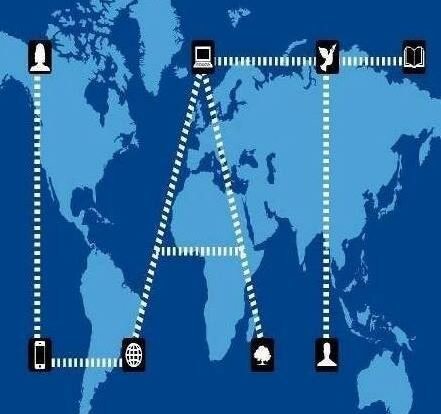
In a world driven by digital advancements, Cybersecurity Policy in Nepal emerges as a strategic vision crafted by the government to fortify the nation’s vital digital infrastructure. Let’s delve into key insights from the government’s perspective on this comprehensive cyber policy. Critical component,Cybersecurity policy in Nepal, of the country’s digital infrastructure, aiming to safeguard its information systems, networks, and data against cyber threats and attacks.
- Government’s Commitment to National Safety:
At the core of Nepal’s strategy on cybersecurity is the government’s unwavering commitment to national safety. Recognizing the digital landscape as a cornerstone of modern governance, the policy aligns with the government’s vision to protect critical elements such as government data hubs, monetary systems, and essential services. By fortifying these digital pillars, the government aims to ensure the uninterrupted functioning of key services vital to the nation.
- Public-Private Collaboration: A Government Priority:
The policy reflects the government’s emphasis on collaboration between the public and private sectors. In aligning state and business interests, the government envisions a synergistic partnership. By pooling resources, expertise, and methodologies, the public and private sectors collectively contribute to a robust digital safety net. This collaborative approach not only enhances cybersecurity but also fosters a sense of shared responsibility in safeguarding the nation’s digital assets.
- Government-Led Initiatives for Public Empowerment:
The government plays a pivotal role in driving initiatives aimed at empowering the public. Nepal’s strategy on cybersecurity underscores the government’s commitment to educating citizens on digital safety through tailored drives and learning sessions. By doing so, the government seeks to create a digitally literate and proactive citizenry. The emphasis on public empowerment aligns with the government’s broader vision of creating a knowledgeable and resilient society capable of navigating the digital seas securely.
- Innovation as a Government Mandate:
Innovation stands as a key pillar in the government’s approach to cybersecurity. Recognizing the need to stay ahead of evolving digital threats, the policy encourages a culture of exploration and fresh thinking. This reflects the government’s commitment to positioning Nepal as a pioneer in the cybersecurity domain. By fostering innovation, the government aims to ensure that the nation is not merely responsive but proactive in addressing the dynamic challenges posed by cyber threats.
- Global Collaboration as a Diplomatic Endeavor:
Nepal’s government views global collaboration as an integral aspect of its cybersecurity strategy. By championing worldwide hand-in-hand efforts, the policy reflects the government’s diplomatic approach to cybersecurity. The exchange of knowledge and adherence to global standards become diplomatic avenues for Nepal to build strong relationships with other nations, fostering a collective response to digital threats that transcends borders.
In conclusion, Nepal’s strategy on cybersecurity not only outlines a strategic framework for safeguarding the nation’s digital future but also provides insights into the government’s vision and commitment to ensuring a secure and resilient digital landscape. Through a combination of protective measures, collaboration, public empowerment, innovation, and global engagement, Nepal’s government aims to lead the nation into a digitally secure future.

FAQs
Certainly! Here are some frequently asked questions (FAQs) related to cybersecurity policy in Nepal:
- What specific digital assets does Nepal’s strategy on cybersecurity aim to safeguard?
-The primary focus of Nepal’s strategy on cybersecurity is to safeguard critical digital assets, including government data hubs, monetary systems, and essential services. The policy aims to create a secure foundation for digital innovation and the uninterrupted progress of the nation.
- How does the government envision the collaboration between the public and private sectors in the realm of cybersecurity?
-The government views collaboration between the public and private sectors as a symbiotic partnership. Beyond bolstering cybersecurity, this collaboration aligns with broader economic goals. By fostering unity and merging expertise, the government envisions a thriving digital ecosystem that promotes innovation and economic development collaboratively.
- What role does public empowerment play in Nepal’s strategy on cybersecurity?
– Public empowerment is a key aspect of the policy, reflecting the government’s vision for an informed citizenry. Through tailored drives and learning sessions, the government aims to equip individuals with digital knowledge and tools. This not only contributes to enhanced cybersecurity but also fosters a culture of responsible digital behavior, aligning with broader socio-economic development goals.
- How does the government perceive innovation in the context of cybersecurity?
– The government considers innovation in cybersecurity as an imperative for pioneering technological advancements. By championing ceaseless exploration and fresh thinking, the government positions Nepal as a regional and global leader in cybersecurity. This innovation-driven approach aligns with the government’s broader vision of a technologically advanced and adaptive nation.
- What is the diplomatic significance of global collaboration in Nepal’s strategy on cybersecurity?
– Global collaboration in the policy is seen as a strategic diplomatic endeavor. Beyond responding to globalized threats, the government aims to exchange wisdom, embrace global standards, and build collaborative relationships. This diplomatic engagement aligns with Nepal’s broader goals of being a responsible and cooperative player in the international cybersecurity arena.
